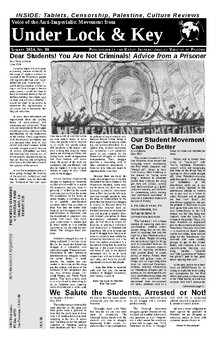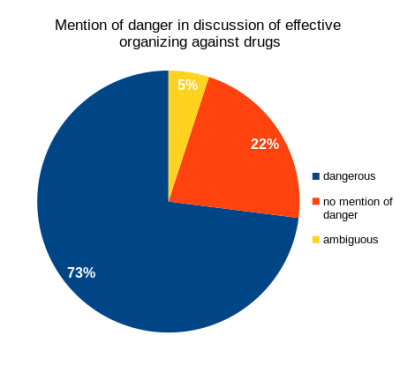
Drugs, Money and Individualism in U.$. Prison Movement
For this issue of Under Lock & Key we took on the task of investigating the impacts of drugs and the drug trade on the prison movement. We ran a survey in the Jan/Feb 2017 and March/April 2017 issues of Under Lock & Key. We received 62 completed surveys from our readers in U.$. prisons. We have incorporated the more interesting results in a series of articles in this issue. This article looks at the central question of the role of the drug trade inside and outside prisons and how to effectively organize among the lumpen in that context. In other articles we look more closely at the recent plague of K2 in U.$. prisons, and the latest rise in opioid addiction and what socialism and capitalism have to offer us as solutions.
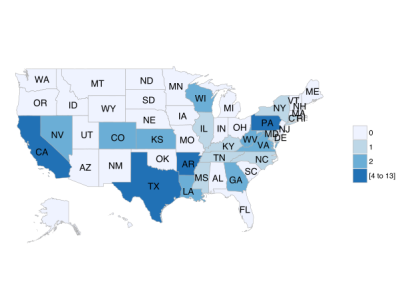
Bourgeois society blames the individual
Bourgeois society takes an individualistic view of the world. When it comes to drugs, the focus is on the individual: we talk about how they failed and succumbed to drugs because of their weakness or mistakes as an individual. While individuals must ultimately take responsibility for their actions, it is only by understanding society at a group level, using dialectical materialism to study the political economy of our world, that we can address problems on a scale that will make a real impact. Even at the individual level, it’s more effective to help people make connections to the root causes of their problems (not supposed persynality flaws) and empower them to fight those causes if we want lasting change.
Much of our criminal injustice system is built on punishment and shaming of those who have been convicted. A proletarian approach to justice uses self-criticism to take accountability for one’s actions, while studying political economy to understand why that path was even an option in the first place, and an attractive one at that.
In the essay “Capitalism Plus Dope Equals Genocide”, Cetewayo, a Black Panther leader, provides a good example of overcoming the conditions one is born into. Ey was addicted to heroin from age 13 to 18, before joining the Black Panther Party. Eir example stresses the importance of providing alternative outlets for oppressed nation youth. In some cases the mere existence of that alternative can change lives.
Drugs and the Principal Contradiction in Prison
MIM(Prisons) and leaders in the Countrywide Council of United Struggle from Within (Double C) have had many conversations about what the principal contradiction is within the prison population. MIM(Prisons) has put forth that the parasitic/individualistic versus self-sufficient/collective material interests of the lumpen class is the principal contradiction within the prison movement in the United $tates today. The drug problem in prisons relates directly to this contradiction. Those pursuing drugs and/or dealing are focused on their persynal interests, at the expense of others. The drug trade is inherently parasitic as it requires an addicted population to be profitable, and users are escaping the world for an individual high, rather than working to make the world better for themselves and others.
A Double C comrade from Arkansas explains this contradiction:
“Things have been slow motion here due to lockdown. Reason being too much violence across the prison. Some of this violence is due to the underground economy. Being submerged in a culture of consumerism which is not only an obstacle to our emancipation (mentally and physically) this self-destructive method of oppression is a big problem consuming the population. I’ve been in prisons where the market is not packed or heavily packed with drugz. It is in those yards that unity and productive lines are greatly practiced. The minute drugz become the leading item of consumption, shit breaks down, individualism sets in and all of the fucked up tendencies follow suit.
“I say 75% of the population in this yard is a consumer. About 5% have no self control, it’s usually this percentage that ends up a ‘debt’ victim (since you owe $ you owe a clean up). Aggressor or not, consumerism is a plague that victimizes everyone one way or another. This consumerism only aids the pigz, rats, infiltrators, and oppressors in continuing with a banking concept of ‘education/rehabilitation’ and therefore domesticating the population.
“I mean the consequences and outcomes are not hidden, it is a constant display of what it is when you can’t pay the IRS, so it is not as if people don’t know. I’ve seen people slow down or stopped some old habits after experiencing/witnessing these beheadings. Shit, I just hit the yard because pigz were all inside the block searching and homeboy’s puddles of blood were still on the yard.”
High Drug Prices in Prison
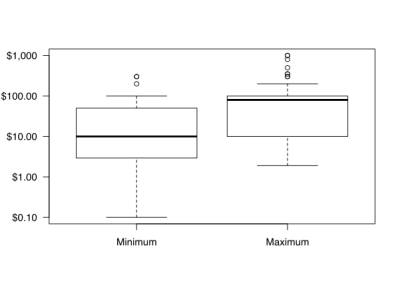
We looked at the minimum and maximum prices each prisoner mentioned (which probably correspond to a “dose”, depending on the drug). The minimum had a median of $10 and the maximum had a median of $80.
Some respondents mentioned the amount drugs cost compared to outside. The median markup was 800% (so, drugs cost eight times as much in prisons, on average). The min was 200% and the max was 3000%, with an interquartile range of 375%-1167%. So, prisoners are highly likely to pay a hefty markup. The economics of the black market create strong interests of keeping it intact.
Drugs and Violence
It is no secret that drugs and violence often go hand-in-hand. As the above comrade alludes to, this is often related to debts. But one of the things we learned from our recent survey of ULK readers is that in most prisons there is an inherent threat of violence towards people who might take up effective organizing against drugs.
A California comrade wrote,
“No one in prison is going to put their safety and security on the line over drugs. You have to understand that life has little value in prison. If you do anything to jeopardize an individual’s ability to earn a living, it will cost you your life.”
Another California comrade was more explicit,
“If you say anything about the drugs, cell phones, extortions, etc., whether if you’re in the general population, or now, worse yet in 2017, SNY/Level IV, the correctional officers inform the key gang members that you’re running your mouth. You either get hit immediately, or at the next prison. Although my safety is now at stake, by prisoners, it’s being orchestrated by corrections higher-ups concocting the story.”
This was in response to our survey question “Have you seen effective efforts by prisoners to organize against drug use and its effects? If so, please describe them.” Not only were the responses largely adamant “no”s, the vast majority said it would be dangerous to do so. This was despite the fact that we did not ask whether it would be dangerous to do so. Therefore, we assume that more than 73% might say so if asked.
Some readers questioned what to do about staff involvement bringing drugs into the prisons. One writer from Pennsylvania said:
“It’s hardly ever dry in Fayette and this institution is a big problem why. A lot of the staff bring it in. Then when someone goes in debt or does something they wouldn’t normally do, they don’t want to help you, if you ask for help. There’s no unity anymore. Nobody fights or stands up for nothing. Everybody rather fight each other than the pigs. It would take a lot to make a change in the drug situation. Is it wrong to put the pigs out there for what they’re doing? Would I be considered a snitch? I know there would be retaliation on me, maybe even a ass whoopin. I’m curious on your input on this.”
If we look at the involvement of staff in bringing drugs into prisons, and the violence associated with the drug trade, we have to call bullshit when these very same institutions censor Under Lock & Key on the claim that it might incite violence. The system is complicit, and many staff actively participate, in the plague of drugs that is destroying the minds and bodies of the oppressed nation men and wimmin, while promoting individualistic money-seeking behavior that leads to brutal violence between the oppressed themselves.
Organizing in Prisons
While the reports responding to that question were mostly negative, and the situation seems dire, we do want to report on the positive things we heard. We heard about successful efforts by New Afrikans getting out of the SHU in California, some Muslim communities and the Nation of Gods and Earths. Some have been at this for over a decade. All of these programs seemed to be of limited scope, but it is good to know there are organizations providing an alternative.
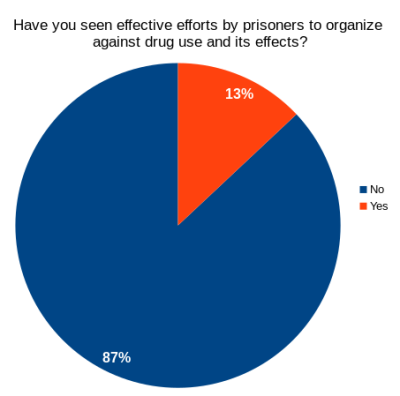
In Arkansas, a comrade reports,
“For the mass majority of drug users and prisoners I have not seen any positive efforts to stop drug use and its effects. But for my affiliation, the ALKN, we have put the product of K2/deuce in law with heroin and its byproducts where no member should be in use of or make attempts to sell for profit or gain. If you do you will receive the consequences of the body who governs this affiliation and organization for lack of discipline and obedience to pollute your self/body and those around you who are the future and leaders of tomorrow’s nations.”
While practice varies among the many individuals at different stages in the organization, the Latin Kings/ALKQN has historically opposed the use of hard drugs amongst its members. Many in New York in the 1990s attributed their recovery from drug addiction to their participation in the organization.(1)
There are some good examples of lumpen organizations engaging in what we might call policies of harm reduction. One comrade mentioned the 16 Laws and Policies of Chairman Larry Hoover as an example of effective organizing against drugs in eir prison. Lumpen leaders like Jeff Fort and Larry Hoover are where we see a national bourgeoisie with independent power in the internal semi-colonies of the United $tates. The proletarian organizations of the oppressed nations should work to unite with such forces before the imperialists corrupt them or force them into submission. In fact, the Black Panthers did just that, but failed to build long-term unity with the Black P. Stone Rangers largely due to state interference and repression.
On the other hand, in some states comrades reported that lumpen organizations are among the biggest benefactors from the drug trade. Some of the same names that are mentioned doing positive work are mentioned as being the problem elsewhere. This is partly explained by the largely unaffiliated franchise system that some of these names operate under. But it is also a demonstration of the principal contradiction mentioned above, which is present in the First World lumpen outside of prisons, too. There is a strong individualist/parasitic tendency combating with the reality that self-sufficiency and collective action best serve the oppressed nations. Too often these organizations are doing significant harm to individuals and the broader movement against the criminal injustice system, and can not be part of any progressive united front until they pull out of these anti-people activities.
The more economically entrenched an organization is in the drug trade, the more they are siding with the imperialists and against the people. But on the whole, the First World lumpen, particularly oppressed nation youth, have the self-interest and therefore the potential to side with their people and with the proletariat of the world.
As one Texas comrade commented:
“I must say that the survey opened a door on the issue about drugs within prison. After doing the survey I brought this up with a couple of people to see if we could organize a program to help people with a drug habit. I’m an ex-drug dealer with a life sentence. I can admit I was caught up with the corruption of the U.S. chasing the almighty dollar, not caring about anyone not even family. Coming to prison made me open my eyes. With the help of MIM and Under Lock & Key I’ve been learning the principles of the United Front and put them in my everyday speech and walk within this prison. The enemy understands that the pen is a powerful tool. Comrades don’t trip on me like other organizations done when I let them know I’m a black Muslim who studied a lot of Mao Zedong.
Building Independent Institutions of the Oppressed
At least one respondent mentioned “prisoners giving up sources” (to the pigs to shut down people who are dealing) in response to the question about effective anti-drug organizing. From the responses shown below, it is clear that the state is not interested in effective anti-drug programming in prisons. This is an example of why we need independent institutions of the oppressed. We cannot expect the existing power structure to meet the health needs of the oppressed nation people suffering from an epidemic of drug abuse in U.$. prisons.
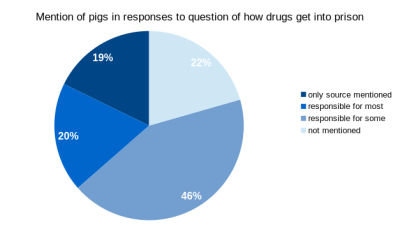
The Black Panthers faced similar conditions in the 1960s in the
Black ghettos of the United $tates. As they wrote in Capitalism Plus
Dope Equals Genocide,
“It is also the practice of pig-police, especially narcotics agents, to seize a quantity of drugs from one dealer, arrest him, but only turn in a portion of the confiscated drugs for evidence. The rest is given to another dealer who sells it and gives a percentage of the profits to the narcotics agents. The pig-police also utilize informers who are dealers. In return for information, they receive immunity from arrest. The police cannot solve the problem, for they are a part of the problem.”
Our survey showed significant abuse of Suboxone, a drug used to treat opioid addiction. In the 1970s Methadone clinics, backed by the Rockefeller Program, became big in New York. The state even linked welfare benefits to these services. Yet, Mutulu Shakur says, “In New York City, 60 percent of the illegal drugs on the street during the early ’70s was methadone. So we could not blame drug addiction at that time on Turkey or Afghanistan or the rest of that triangle.”(2) Revolutionaries began to see this drug that was being used as treatment as breaking up the revolutionary movement and the community. Mutulu Shakur and others in the Lincoln Detox Center used acupuncture as a treatment for drug addiction. Lincoln Detox is an example of an independent institution developed by communists to combat drug addiction in the United $tates.
“[O]n November 10, 1970, a group of the Young Lords, a South Bronx anti-drug coalition, and members of the Health Revolutionary Unity Movement (a mass organization of health workers) with the support of the Lincoln Collective took over the Nurses’ Residence building of Lincoln Hospital and established a drug treatment program called The People’s Drug Program, which became known as Lincoln Detox Center.”(3) Lincoln Detox was a program that was subsequently run by the Young Lords Party, Black Panthers that had survived the Panther 21 raid, the Republic of New Afrika, and White Lightning, a radical organization of white former drug addicts, until 1979 when a police raid forced the communists out of the hospital, removing the political content of the program.(4)
Young Lord Vicente “Panama” Alba was there from day one, and tells eir story of breaking free of addiction cold turkey to take up the call of the revolution. After sitting on the stoop watching NYPD officers selling heroin in eir neighborhood, and a few days after attending a Young Lords demonstration, Panama said, “Because of the way I felt that day, I told myself I couldn’t continue to be a drug user. I couldn’t be a heroin addict and a revolutionary, and I wanted to be a revolutionary. I made a decision to kick a dope habit.”(3) This experience echoes that of millions of addicted Chinese who went cold turkey to take up building socialism in their country after 1949.
Mutulu Shakur describes how the Lincoln Detox Center took a political approach similar to the Chinese in combatting addiction, “This became a center for revolutionary, political change in the methodology and treatment modality of drug addiction because the method was not only medical but it was also political.” Shakur was one of the clinic’s members who visited socialist China in the 1970s to learn acupuncture techniques for treating addiction. He goes on to describe the program:
“So the Lincoln Detox became not only recognized by the community as a political formation but its work in developing and saving men and women of the third world inside of the oppressed communities, resuscitating these brothers and sisters and putting them into some form of healing process within the community we became a threat to the city of New York and consequently with the development of the barefoot doctor acupuncture cadre, we began to move around the country and educate various other communities instead of schools and orientations around acupuncture drug withdrawal and the strategy of methadone and the teaching the brothers and sisters the fundamentals of acupuncture to serious acupuncture, how it was used in the revolutionary context in China and in Vietnam and how we were able to use it in the South Bronx and our success.”(2)
Dealing with the Dealers
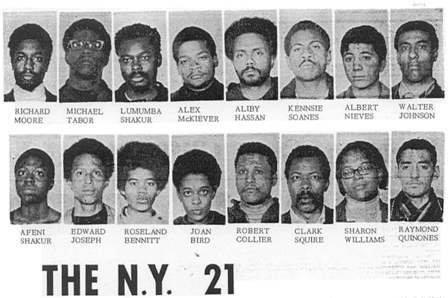
Though the Black Panthers had organized the workers at Lincoln Hospital leading up to the takeover, by that time the New York chapter was already in decline due to repression and legal battles. While many BPP branches had to engage with drug cartels, the New York chapter stood out in their launching of heavily-armed raids on local dealers and dumping all of their heroin into the gutters. The New York Panthers faced unique circumstances in a city that contained half of the heroin addicts in the country, which was being supplied by la Cosa Nostra with help from the CIA. While there was mass support for the actions of the Panthers at first, state repression pushed the New York Panthers down an ultra-left path. The Panther 21 trial was a huge setback to their mass organizing, with 21 prominent Panthers being jailed and tried on trumped up terrorism charges. After they were all exonerated, the New York Panthers, siding ideologically with Eldridge Cleaver who was pushing an ultra-left line from exile in Algeria, made the transition to the underground. If they were going to be accused of bombings and shootings anyway, then they might as well actually do some, right?
These were the conditions under which the Black Liberation Army was formed. Though there was overlap between the BLA and those who led community projects like Lincoln Detox, the path of the underground guerrillas generally meant giving up the mass organizing in the community. Instead, raiding local drug dealers became a staple of theirs as a means of obtaining money. Money that essentially belonged to the NYPD, which was enabling those dealers and benefiting them financially. The former-Panthers-turned-BLA continued to destroy the dope they found, and punished the dealers they raided.
Again, we are confronted with this dual nature of the lumpen class. It would certainly be ultra-left to view all drug dealers as enemies to be attacked. It is also certainly clear that the CIA/Mafia/NYPD heroin trade in New York was an enemy that needed to be addressed. But how does the revolutionary movement interact with the criminal-minded LOs today? In its revolutionary transformation, China also had to deal with powerful criminal organizations. The Green Gang, which united the Shanghai Triads, significantly funded the Guomindang’s rise to power, primarily through profits from opium sales. In the late 1940s they opened up negotiations with the Communist Party as the fate of China was becoming obvious. However, no agreement was reached, and the criminal organizations were quickly eliminated in mainland China after 1949. They took refuge in capitalist outposts like Hong Kong, Macao, Taiwan and Chinatowns elsewhere in Asia and Europe. While heroin has returned to China, the gangs have not yet.(5)
While the contradiction between the communists and the drug gangs did come to a head, it was after defeating Japanese imperialism and after defeating the reactionary Guomindang government. And even then, most drug dealers were reformed and joined the building of a socialist society.
In eir article, Pilli clearly explains why slangin’ can’t be revolutionary. And a comrade from West Virginia gives an example where the shot-callers are explicitly working against the interest of the prison movement to further their economic goals. We must address the question of how the prison movement should engage with those who are slangin’. The answer to that is beyond the scope of our drug survey, and needs to be found in practice by the revolutionary cells within prisons taking up this organizing work.
Building Socialism to Serve the People
Many respondents to our survey sounded almost hopeless when it came to imagining a prison system without rampant drug addiction. But this hopelessness is not completely unfounded. As “Capitalism Plus Dope Equals Genocide”, reads:
“The government is totally incapable of addressing itself to the true causes of drug addiction, for to do so would necessitate effecting a radical transformation of this society. The social consciousness of this society, the values, mores and traditions would have to be altered. And this would be impossible without totally changing the way in which the means of producing social wealth is owned and distributed. Only a revolution can eliminate the plague.”
To back up what the Panthers were saying here, we can look at socialist China and how they eliminated opium addiction in a few years, while heroin spread in the capitalist United $tates. The Chinese proved that this is a social issue and not primarily a biological/medical one. The communist approach differed greatly from the Guomindang in that addicts were not blamed or punished for their addiction. They were considered victims of foreign governments and other enemies of the people. Even many former dealers were reformed.(6) Although we don’t have the state power now to implement broad policies like the Chinese Communist Party, we can help drug users focus on understanding the cause and consequences of their use in a social context. We need people to see how dope is harming not only themselves, but more generally their people, both inside and outside of prison. People start doing drugs because of problems in their lives that come from problems in capitalist society. Being in prison sucks, and dope helps people escape, even if it’s fleeting. But this escape is counter productive. As so many writers in this issue of ULK have explained, it just serves the interests of the criminal injustice system. We can help people overcome addictions by giving them something else to focus on: the fight against the system that wants to keep them passive and addicted.
Related Articles:
- Opioids on the Rise Again Under Imperialism
- Poisoning the Well: The imprisoned dope trade and its impact on the movement
- Epidemic of K2 Overdoses at Estelle, Throughout Texas
- Drugs Hold Back West Virginia Organizing
- Drugs a Barrier to Organizing in Many Prisons
- New Afrikan Prisoners: Anti-alcohol campaign
- Suboxone Spreads to More Prison Systems, Little Evidence of Counseling
- Providing What They Can't - Rehab for Releasees
- Suboxone Warning from the MDOC
- Sakai's Investigation of the Lumpen in Revolution
- Marxist Economics and Amerikan Mass Incarceration: Revisiting ULK 8
- Opioids on the Rise Again Under Imperialism
- Arkansas DOC Covers Up Deaths from K2, Frames Comrade
- Study Group's Long Struggle; Face Drugs and Censorship
- Rest In Power Mutulu Shakur
